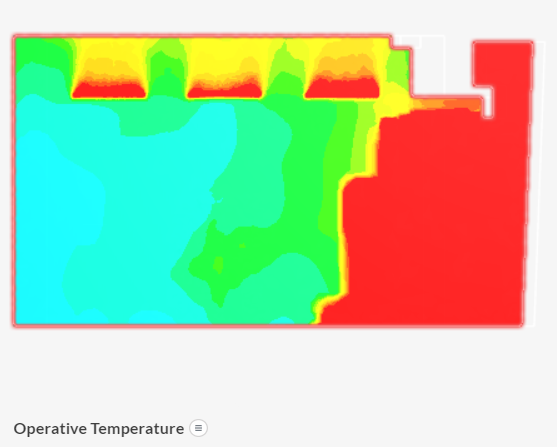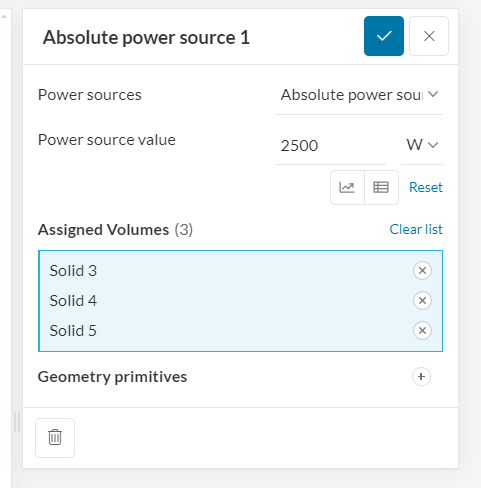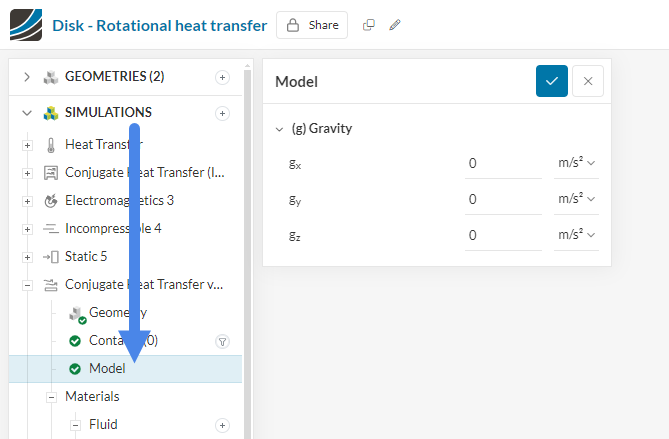hello everyone
I am trying to simulate a radiant heater using power source in advanced concept to evaluate outdoor thermal comfort. My power source specifications are shown in attachment. The results show that the heater radiates heat, only upward, while I want it to be multi directional. the results are attached too.


Hi @boomshahrpaydar, thanks for posting on the forum and welcome to the SimScale Community 
It’s a bit tricky spotting where the problem might be, especially as it seems to be related not to the simulation’s convergence but to the expected result.
In my understanding, this could be happening due to buoyancy effects (which are modeled even for the incompressible version of CHT) and a flow would naturally appear upwards due to the change in fluid density. To test if that’s the case, you can just set the gravity to 0 under the “Model” tab:

Best,
Igor
I will kindly give my feedback:
- Gravity Considerations: I wouldn’t recommend using zero-gravity settings, as this would cause heat to expand in all directions in a non-physical way.
- Domain Boundaries: I’m a bit unclear about your domain setup. If your focus is outdoor thermal comfort, the domain boundaries seem too close to the heat sources. Expanding the boundaries might better capture the interactions between the heat sources and the environment.
- Radiative Heat Modeling: If you are modeling a radiating heater, make sure that it’s truly radiating heat rather than just warming the surrounding air. Are you resolving radiative heat transfer in the model, or are you simply heating the surfaces?
- Heat Directionality: Radiators typically emit heat in a specific direction, not uniformly. You might consider directing the heat flow from the lower plate and isolating the upper part. This would allow heat transfer by both convection and radiation, as in a real device.
- Surface Area Considerations: The current surface areas appear quite large, which could lead to dominant convective heat transfer and a lower temperature increase. Smaller heating surfaces could raise the temperature, enhancing radiative energy transfer—assuming you are indeed resolving radiation.
- Radiative Focus: If radiation heat transfer is your primary interest, estimating the surface temperature of the radiating surfaces might help. You could set a fixed temperature to study how radiative energy interacts, reflects, and is absorbed by other surfaces.
I hope this helps,
Jairo
Thanks for the feedback @jairogut! Just for clarification on my last post - it’s not an active suggestion for getting results out of a simulation w/o gravity settings as this will lead to non-physical behavior. It’s more of a suggestion that the presence of gravity is the reason why the flow is behaving like that.
Cheers
Igor
1 Like
Ohh you are right @igaviano . Please accept my apologies; I did not read your post thoroughly and mistakenly assumed that the simulation result was consistent with a non-zero gravity assignment, as the heat appears to be rising (even though the temperature field still looks unusual).
Nonetheless, my advice was primarily aimed at achieving a radiative heat source, which should not rely on convective heat transfer.
Best regards,
Jairo
1 Like


